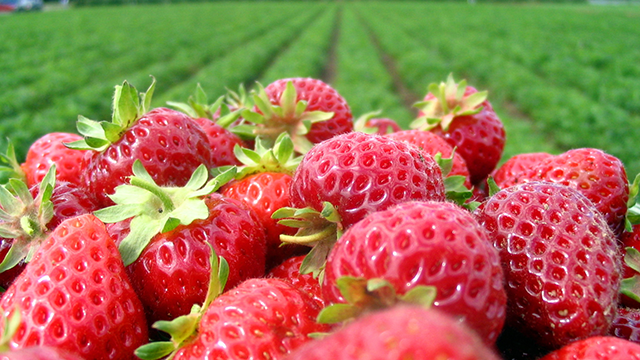
Since the 2005 ban of methyl bromide by federal regulators, winter strawberry growers have had limited options for managing broadleaf weeds, grasses, and nutsedge species. But new research featured in the journal Weed Technology shows drip-applied herbicides may help to fill the gap.
Scientists at the University of Florida's Gulf Coast Research and Education Center conducted field experiments to evaluate seven herbicides applied through drip irrigation, including EPTC, flumioxazin, fomesafen, halosulfuron, napropamide, oxyfluorfen, and S-metolachlor. Each was applied one to two weeks before strawberry plants were transplanted into beds covered with polyethylene mulch. Researchers then evaluated weed control effectiveness and how well strawberry plants tolerated the herbicides.
EPTC, fomesafen and napropamide were found to be effective at suppressing yellow nutsedge, while flumioxazin, fomesafen, and halosulfuron were effective at suppressing black medic. Unfortunately, none of the drip-applied herbicides adequately suppressed Carolina geranium.
Researchers found that halosulfuron was the only herbicide to produce significant injury to strawberry plants. They also determined there was no reduction in total berry yield from any of the herbicides in the study, including halosulfuron.
"Our findings suggest that the right drip-applied herbicides administered close to the transplant date can be a safe and helpful component of weed control in winter strawberry crops," says Nathan Boyd, associate professor at the University of Florida. "Drip application can move herbicides closer to the weed root zone for better control results, while reducing application risks and drift concerns."











